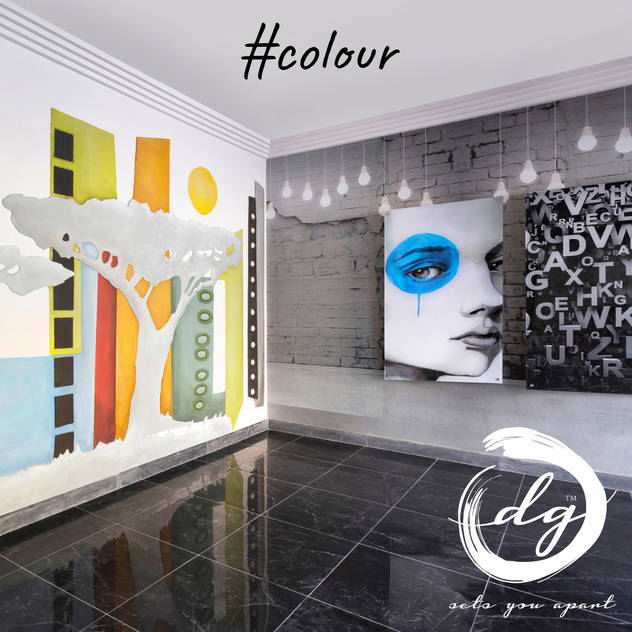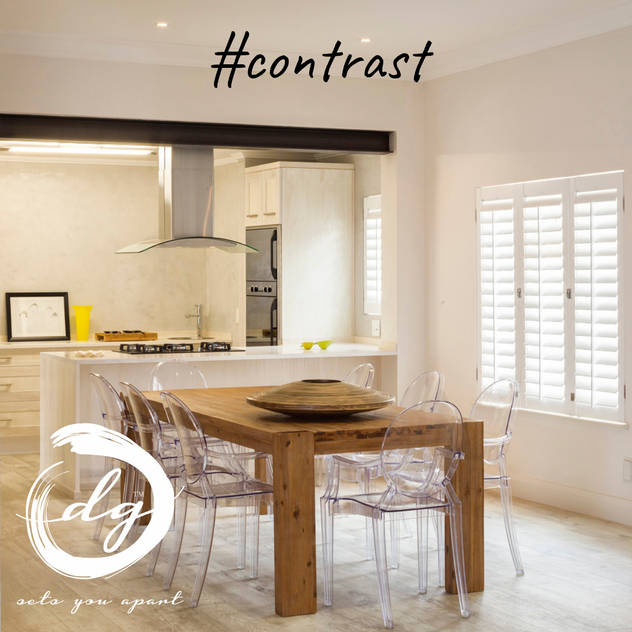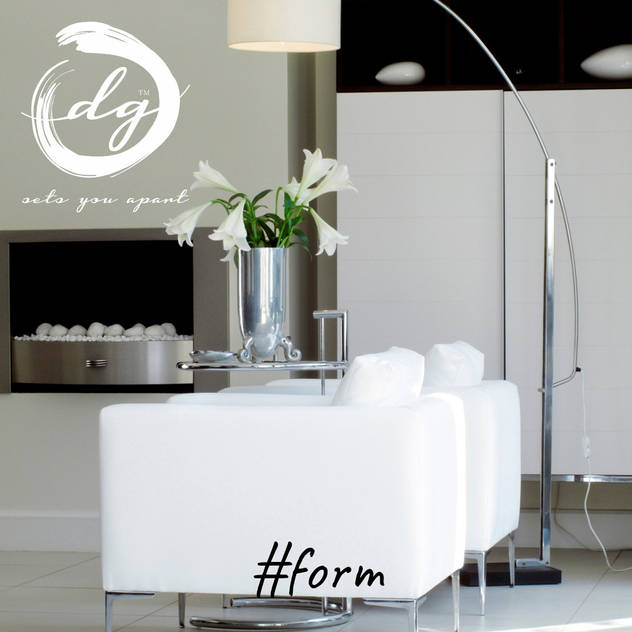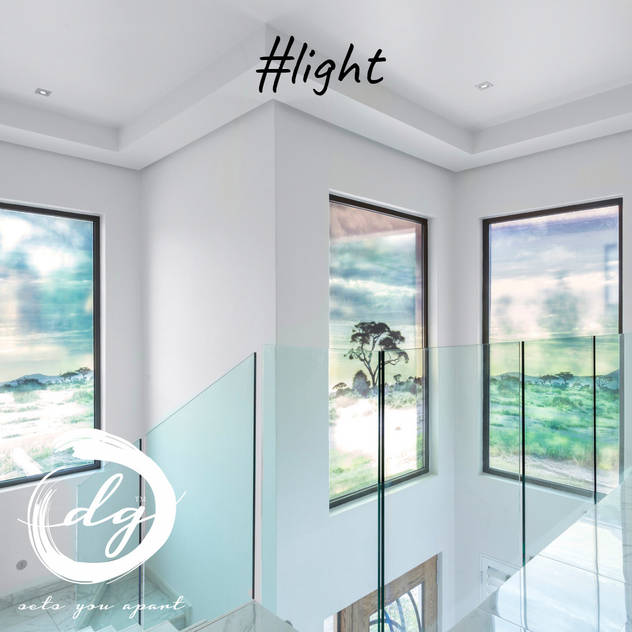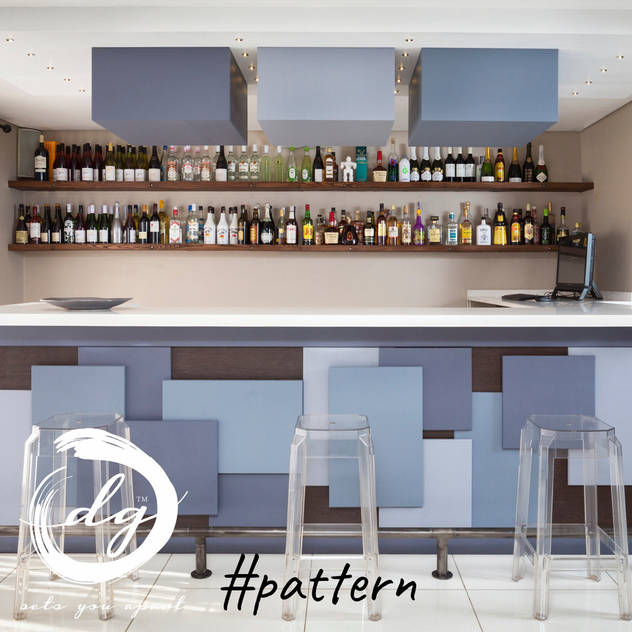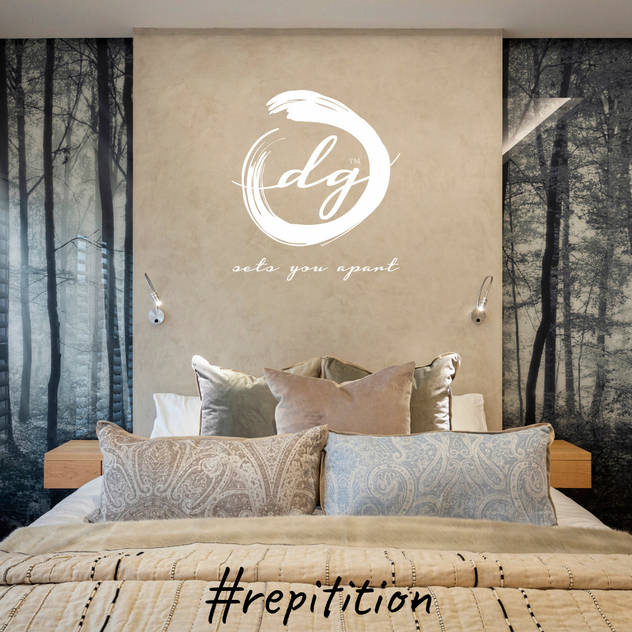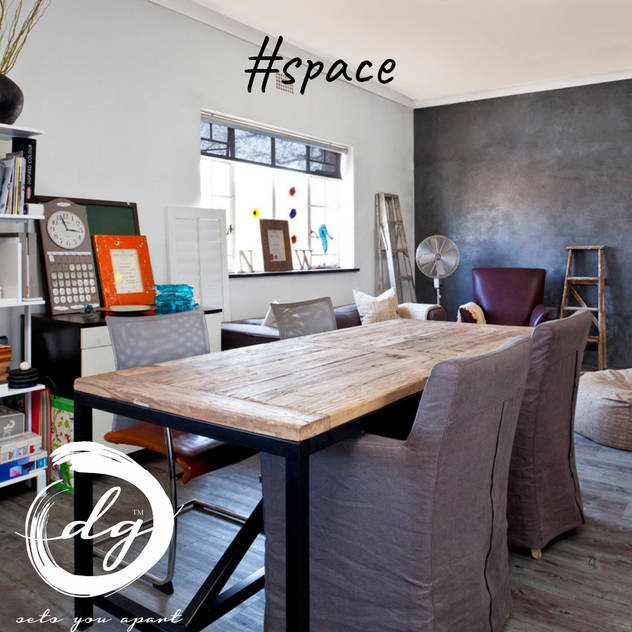| If we think of Interior Design we immediately think of creativity in overload paired with the talent and flair of the designer. Hardly ever do we consider the scientific elements that play a role in the success of the design. Interior Designers mostly follow fundamentals and principles that is commonly used in the industry. These are carefully incorporated and balanced to create extraordinary spaces that is not only aesthetically pleasing but also functional. With a well-thought-through design, flaws can be disguised and good features enhanced. These fundamentals may include the following:
Colour: Colour is colour is colour… said no-one ever! colour can create or alter mood, definition and perception. A light and bright colour may make a small space appear larger. An accent colour can create contrast and draw attention to certain detail. The psychology of colour is very important in design. Red is a very passionate, alive colour stimulating appetite in the kitchen while blue may have a calming effect in the bedroom. Yellow may increase happy feelings and grey can stimulate unbiased thoughts leaving room for no interruptions. Attention given to personal colour preference is an important part of successful design. Contrast: Contrast refers to the arrangement of opposite elements (light vs. dark colours, rough vs. smooth textures, large vs. small shapes, etc.) in a piece so as to create visual interest, excitement and drama. Strategic use of contrasting elements creates compelling curiosity in a space. Form: Form defines the character of the room, as well as any items within the room. In other words, it relates to the physical form of anything that is three dimensional. It may be circular shapes found in a space, or the rectangular form of a room that lay down the foundation for developing the rest of the design around it. Light: Natural and/or artificial light plays a very important role in any space. It is important to make use of both and to implement it in such a way that it compliments one another. It may be used as functional lighting (like bright lights in the office environment) or as accent lighting (emphasizing an object like art of focal point) or mood lighting (adding ambiance). Line: Horizontal, vertical and dynamic lines are used to emphasis features of the room or to guide the eye away from or towards features shaping the room. Lines are used for coordination and can bring harmony to a room. Line can accentuate the length or depth of a room or the height of walls and ceiling. Horizontal lines are created by tables and vertical lines by windows or doors. Dynamic lines are curved and found in stairs and curves. Pattern: Pattern offers a similar use to texture in that it can add appeal to a room. A pattern is created by the use of a repetitive design and can be found in wallpaper, soft furnishings, rugs, and fabrics. Patterns come in various types, such as stripes, geometric, pictorial, organic, motif, and animal prints. Repetition: The principle of repetition means the reusing of the same or similar elements throughout your design. Repetition of design elements will bring about unity, consistency, and cohesiveness. REPETITION is the use of similar or connected pictorial elements. Adding forms of similar shapes can create harmony and balance. A space is typically more pleasing if the dominant form is repeated in minor objects throughout the room. Space: This is the foundation of interiors and space must be understood as a fundamental concept. Making good use of the space available in all facets; length, width and height can really enhance a design. Interior designers have the ability to really see a space three dimensional and to pair the features with enhancing elements. Positive space contains objects like a table or couch and negative space is left empty or open for traffic. Again balance is very important for functionality. Minimalist style boasts more negative space than eclectic style. Texture: Texture refers to the surface or finish of an object. Texture is very important especially when considering the dimension and depth it can bring to a space. Different kinds of textures include: glossy, coarse, smooth, rough, shiny, dull, wet, dry. The use of texture can enhance a space where similar colours are used throughout the design. colour: Colour is colour is colour… said no-one ever! Colour can create or alter mood, definition and perception. A light and bright colour may make a small space appear larger. An accent colour can create contrast and draw attention to certain detail. The psychology of colour is very important in design. Red is a very passionate, alive colour stimulating appetite in the kitchen while blue may have a calming effect in the bedroom. Yellow may increase happy feelings and grey can stimulate unbiased thoughts leaving room for no interruptions. Attention given to personal colour preference is an important part of successful design. Contrast Contrast refers to the arrangement of opposite elements (light vs. dark colours, rough vs. smooth textures, large vs. small shapes, etc.) in a piece so as to create visual interest, excitement and drama. Strategic use of contrasting elements creates compelling curiosity in a space. Form Form defines the character of the room, as well as any items within the room. In other words, it relates to the physical form of anything that is three dimensional. It may be circular shapes found in a space, or the rectangular form of a room that lay down the foundation for developing the rest of the design around it. Light Natural and/or artificial light plays a very important role in any space. It is important to make use of both and to implement it in such a way that it compliments one another. It may be used as functional lighting (like bright lights in the office environment) or as accent lighting (emphasising an object like art of focal point) or mood lighting (adding ambience). Line Horizontal, vertical and dynamic lines are used to emphasise features of the room or to guide the eye away from or towards features shaping the room. Lines are used for coordination and can bring harmony to a room. Line can accentuate the length or depth of a room or the height of walls and ceiling. Horizontal lines are created by tables and vertical lines by windows or doors. Dynamic lines are curved and found in stairs and curves. |
| Pattern Pattern offers a similar use to texture in that it can add appeal to a room. A pattern is created by the use a repetitive design and can be found in wallpaper, soft furnishings, rugs and fabrics. Patterns come in various types, such as stripes, geometric, pictorial, organic, motif and animal prints. Repitition The principle of repetition means the reusing of the same or similar elements throughout your design. Repetition of design elements will bring about unity, consistency, and cohesiveness. REPETITION is the use of similar or connected pictorial elements. Adding forms of similar shapes can create harmony and balance. A space is typically more pleasing if the dominant form is repeated in minor objects throughout the room. Space This is the foundation of interiors and space must be understood as a fundamental concept. Making good use of the space available in all facets; length, width and height can really enhance a design. Interior designers have the ability to really see a space three dimensional and to pair the features with enhancing elements. Positive space contains objects like a table or couch and negative space is left empty or open for traffic. Again balance is very important for functionality. Minimalist style boasts more negative space than eclectic style. Texture Texture refers to the surface or finish of an object. Texture is very important especially when considering the dimension and depth it can bring to a space. Different kinds of textures include: glossy, coarse, smooth, rough, shiny, dull, wet, dry. The use of texture can enhance a space where similar colours are used throughout the design. Courtesy of Homify | Deborah Garth
|
| Need more information? Fill in the form below and we will contact you! |
| |

